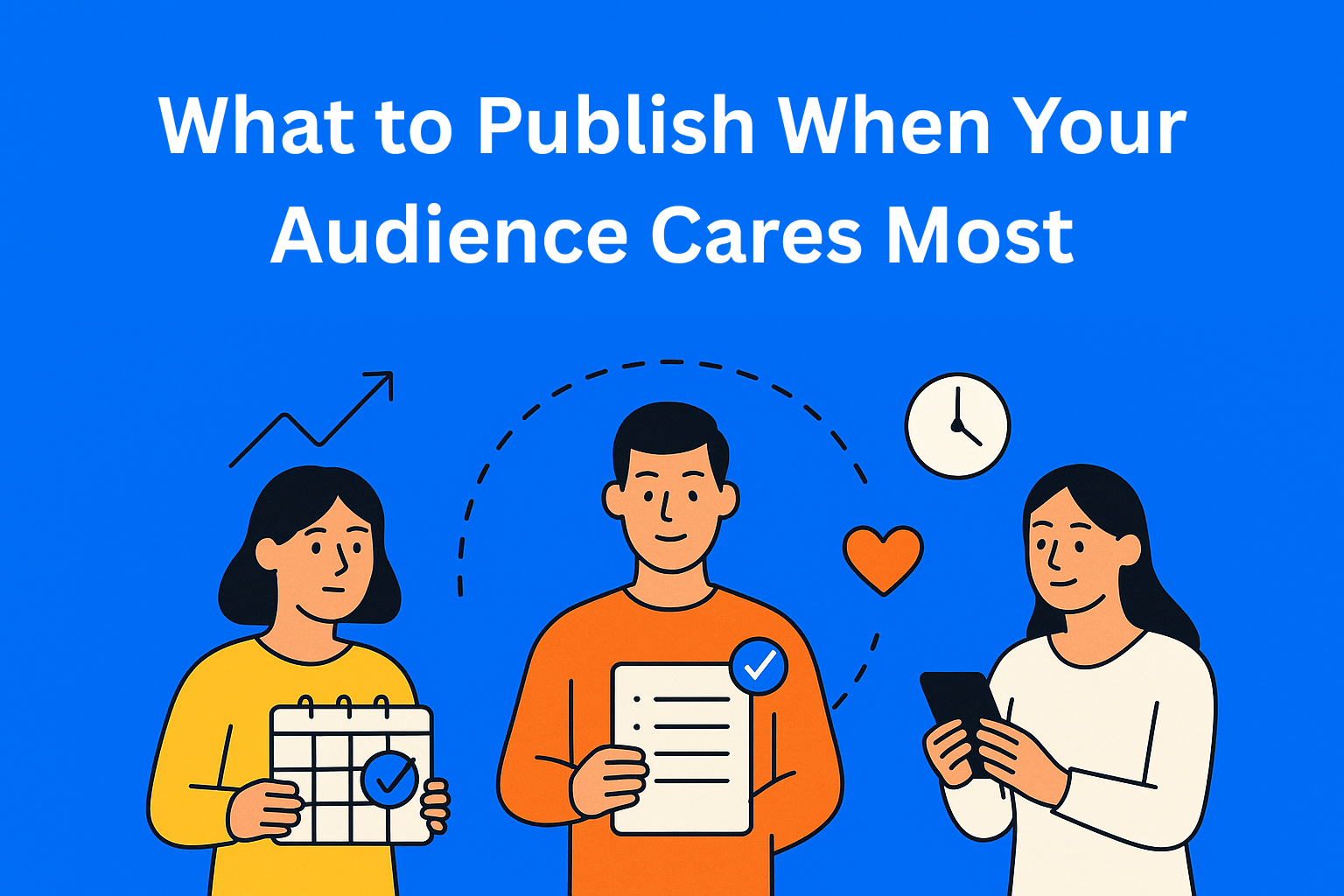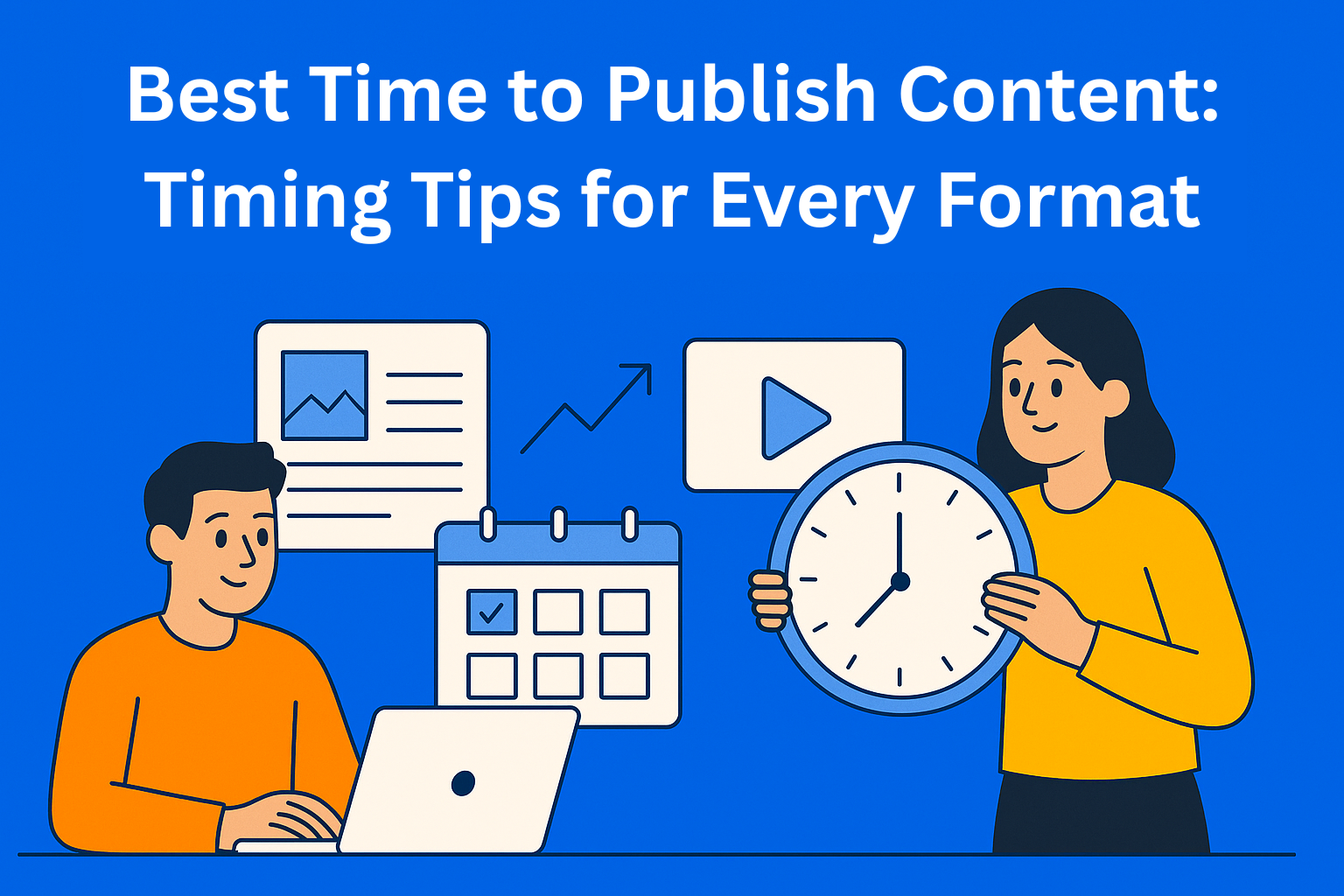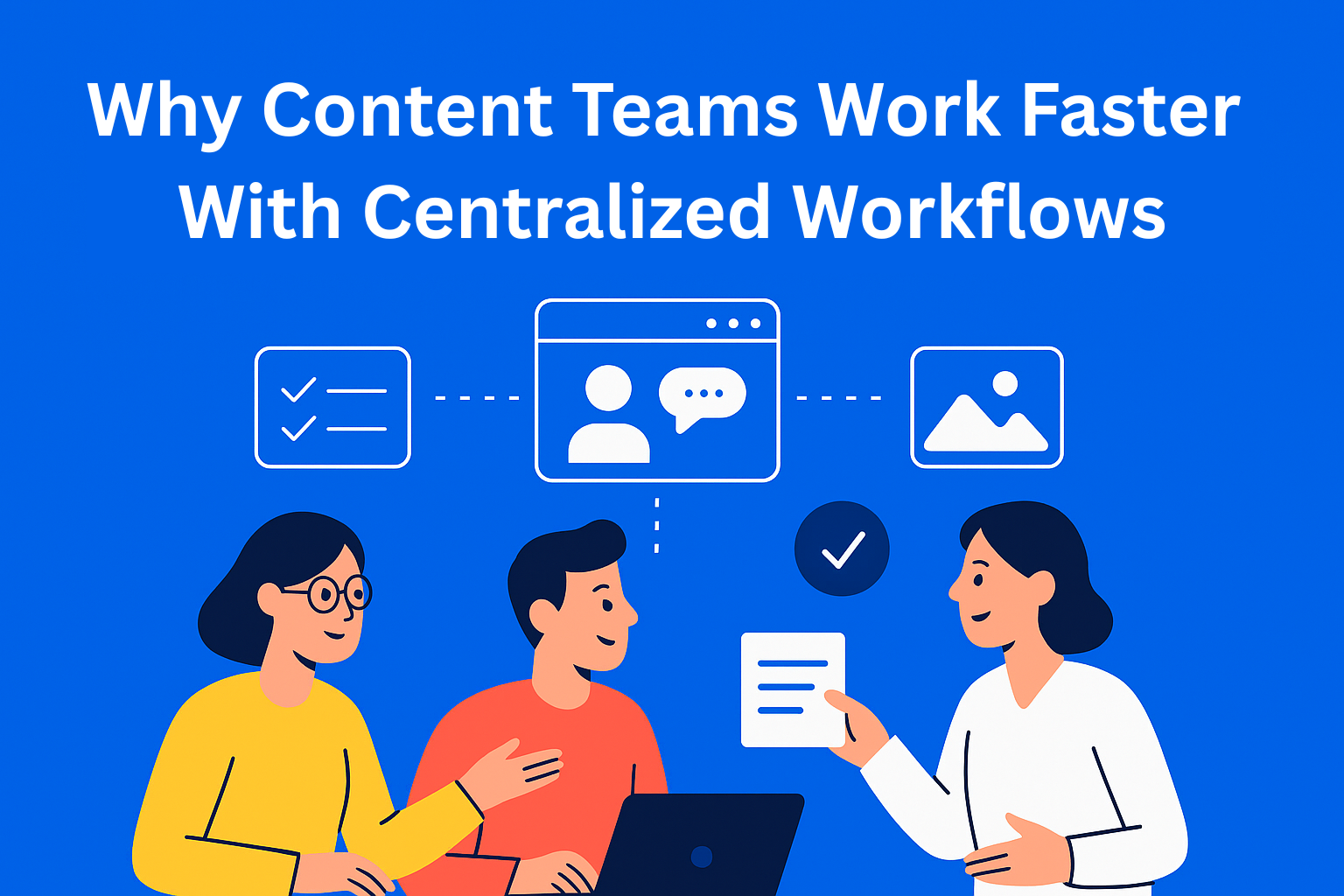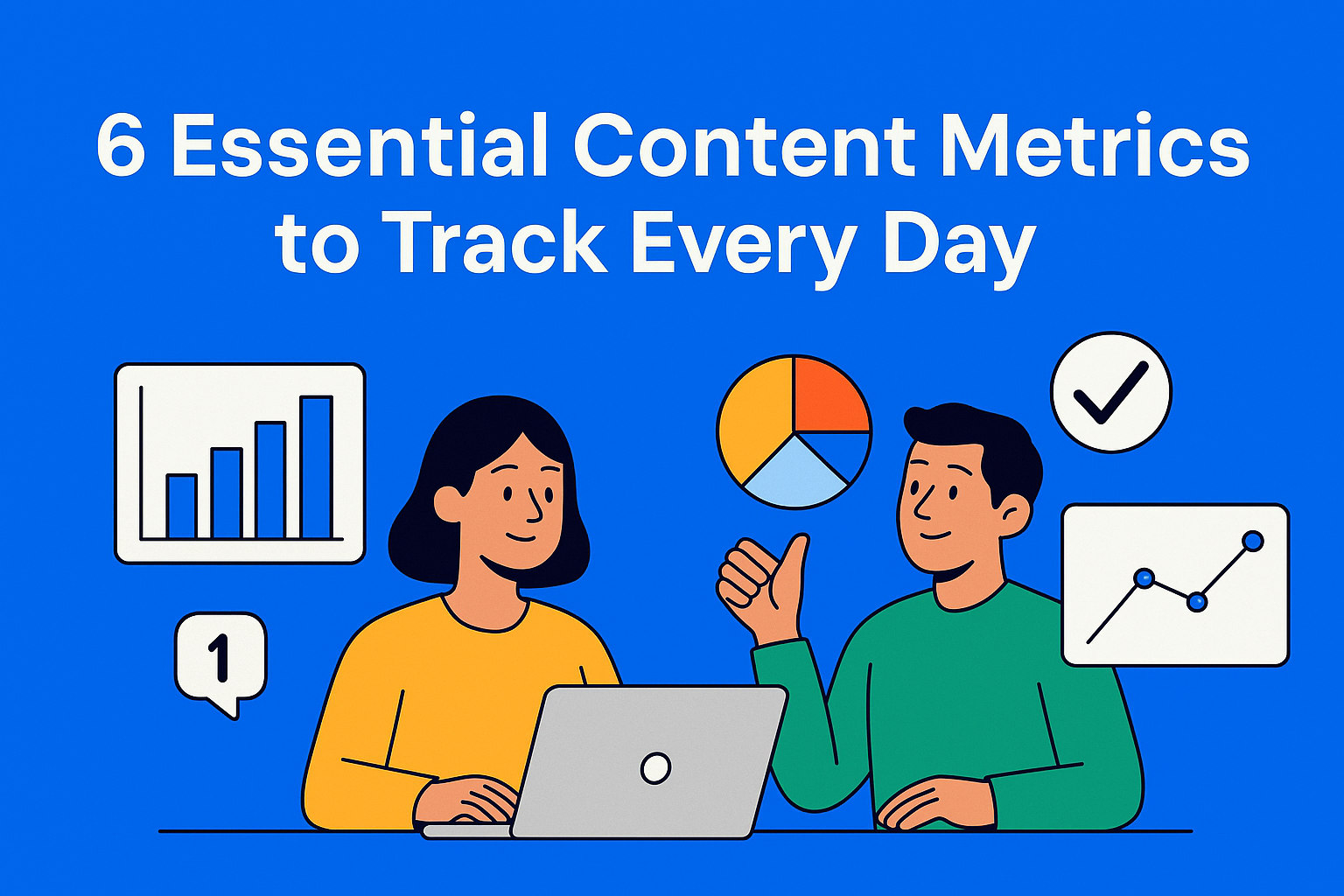Content Timing: Best Times to Publish and Share on Each Channel
Discover the best times to publish content across key channels like LinkedIn, Instagram, and Twitter (X). Boost engagement, reach, and ROI with data-driven timing strategies and see how EasyContent helps streamline planning across your entire content workflow.
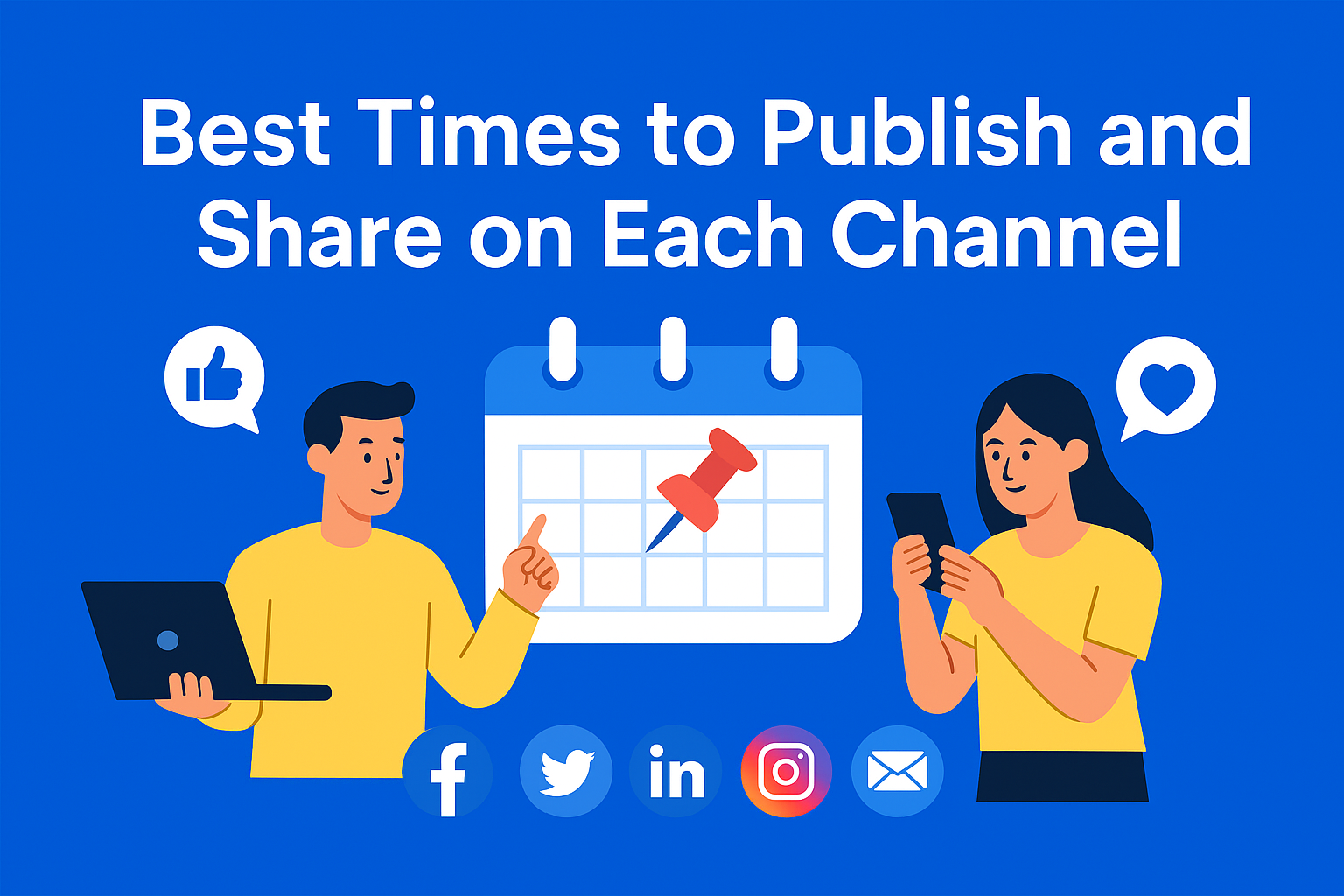
You can create the best content in the world - but if you publish it when no one’s online, you’re basically talking to yourself. Timing your content distribution is a surprisingly powerful (and often underrated) way to boost reach, engagement, and conversions.
This becomes even more important when you’re running a multi-channel strategy. LinkedIn, Instagram, email, TikTok - each platform has its own rhythm. If you miss the moment, you’re leaving impressions and clicks on the table. For content managers, strategists, and digital marketing leaders, mastering timing is a strategic decision - not just a tactical one.
Key Takeaways
- Timing amplifies content performance - even great content flops if published when your audience isn’t online.
- Each platform has its own rhythm, from Instagram’s scroll hours to LinkedIn’s mid-morning weekday window.
- Know your audience’s time zones and habits - especially for global teams targeting regional markets.
- Use data and testing to refine your timing strategy across email, social, blogs, and video platforms.
- Treat timing as strategic, not tactical - embed it into your content planning and campaign workflows.
What Actually Determines the Best Time to Post
Let’s be clear - there’s no “perfect time” that works across the board. But there are key factors you should always consider:
- Audience behavior: Where are they located? When are they active online? Keep in mind their time zone - if your team is based in India but your audience is in the U.S., publishing at 10 AM local time might completely miss your window of opportunity. Always align your content schedule with your target audience's daily rhythm.
- Time zones: Crucial. If your team is in Berlin and your audience is in New York, don’t post at 10 AM your time - you’ll be six hours off.
- Content type: Short videos behave differently than long-form blog content.
- Platform algorithms: Some reward fast interaction; others prioritize time spent engaging.
These elements shape the windows when your content has the best chance of success. The only way to know what works best for you? Monitor, test, and adapt.
Facebook: Still Powerful, but Timing Is Key
Facebook may feel a bit old-school, but it still carries a lot of weight - especially in the B2C space. Most data suggests that the best posting time is weekday mornings between 9 AM and 12 PM (audience local time), with some additional engagement peaks in the afternoon depending on your industry and audience demographics.
Video content tends to perform better in the afternoon, while link-based posts work better earlier in the day. Don’t overlook weekend posts either - especially for lifestyle or entertainment content.
Use tools like Meta Business Suite or built-in Insights to track performance. It’s not about volume anymore on Facebook - it’s about precision.
Instagram: Catch the Scroll
Recent data from SproutSocial suggests that Instagram engagement is strongest on weekdays between 10 AM and 3 PM, particularly on Tuesdays and Wednesdays. Buffer confirms that around 3 PM tends to bring the widest reach, with additional peaks around 6 PM on weekends.
Reels, feed posts, and Stories each perform differently. Reels often have a longer shelf life and can gain traction days after publishing. Feed and Stories need quick engagement - ideally within the first 1-2 hours.
If you're targeting Gen Z or younger millennials, consider evening hours when they're most likely to scroll. Timing here affects not just reach - but whether your post ends up on the Explore page.
LinkedIn: Think Like a Professional
The best time to post on LinkedIn is typically between 10 AM and 12 PM on weekdays, with peak engagement occurring on Tuesdays, Wednesdays, and Thursdays. Earlier time slots around 8 AM can also work, but data increasingly highlights mid-morning as the prime window for professional content.
Avoid weekends and late-night posts unless you’re reacting to a news story or publishing campaign-specific content.
Long, thoughtful posts perform well - especially when they come from individual leaders or team members, not just the brand page. Time it right to spark meaningful discussions.
Twitter (X): Timing for Real-Time Impact
X (formerly Twitter) thrives on speed and context. To drive engagement, your post has to be relevant right now. Tweets generally get the most reach and interaction on weekdays between 8 AM and 11 AM local time, with strong performance around 9 AM on Wednesdays, and additional momentum during midday (12-2 PM) depending on your audience.
Use Threads for deeper insights or storytelling. And remember - hashtags and mentions can boost discovery, but they won’t save a poorly timed post.
If your content is tied to news, product launches, or trends - this is the platform to move fast.
TikTok: Ride the Viral Wave
TikTok plays by its own rules. The algorithm behaves differently from other platforms, but studies show that the best posting windows are typically evenings between 6 PM and 10 PM, with Fridays and Saturdays being particularly strong, according to data from SproutSocial and Later.
TikTok rewards watch time and repeat views. If a video gains early traction, it’ll keep getting pushed. That’s why timing your posts when your audience is active is critical.
Keep an eye on trending sounds and formats - publishing during peak trend cycles significantly increases your odds of visibility.
Pinterest: Think Ahead. Way Ahead.
Pinterest is all about planning. Users search for inspiration weeks (sometimes months) before they take action. For seasonal content, it’s best to publish 4–6 weeks before the key date, or up to 8 weeks in advance for larger campaigns.
Engagement usually peaks on weekends and during late evenings, when users are in discovery mode. Holiday decor, recipes, event planning - here, timing is about anticipation.
If your content calendar isn’t built around early publishing on Pinterest, you’re missing the platform’s biggest strength.
Email Marketing: Win the Inbox
Email still converts. Seriously. But only if you get the timing right. For most B2B lists, the best window is Tuesday or Thursday mornings between 9 AM and 11 AM.
For DTC and ecommerce audiences, afternoons can perform better - especially for promotional content. Track open rates, click-throughs, and run A/B tests to find your sweet spot.
And whatever you do - don’t send key campaigns on Monday morning or Friday afternoon unless you want them ignored.
Blog Posts: Publish When Discovery Is High
Search engines may not care when you publish - but your readers do. Blog posts tend to perform best when published in the morning, ideally between 9 AM and 11 AM, and synced with email and social distribution.
If your goal is SEO, timing matters less than consistency and quality. But if your blog is tied to a campaign or product launch, good timing creates momentum across every channel.
Share your post the same day it goes live to capitalize on freshness.
Final Thoughts: Timing Is Strategy
Great content deserves great timing. But too many teams treat publishing like a checkbox - “Is it done?” instead of “Is this the right time to go live?”
Whether you’re a Head of Content, a VP of Marketing, or leading a small but mighty team - timing needs to be part of the plan, not an afterthought. Watch the data, tailor by channel, and always factor in how your audience behaves in the real world.
Because in content, it’s not just what you say - it’s when you say it.



